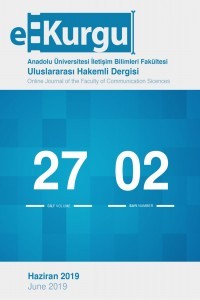Tracing the Life Cycle of Water Conflict News Coverage: A Case study of Cauvery River Tribunal Final Verdict
Tracing the Life Cycle of Water Conflict News Coverage: A Case study of Cauvery River Tribunal Final Verdict
___
- Anand, P. B. (2007). 'Capability, Sustainability, and Collective Action: An Examination of a River Water Dispute’, Journal of Human Development and Capabilities, 8:1,109 — 132.
- Anand, P. B. (2004) ‘Water and Identity –An Analysis of the Cauvery River Water Dispute’- Bradford Centre for International Development, University of Bradford.
- Chomsky, Noam, Herman, S. E. (1988). Manufacturing Consent: The Political Economy of the Mass Media, Pantheon Press.
- Conca, K. (2006). The New Face of Water Conflict. Policy Brief no. 3 of the Navigating Peace Initiative, Environmental Change and Security Program, Woodrow Wilson International Center for Scholars.
- Folke, S. (1998). ‘Conflicts over Water and Land in South Indian Agriculture: A Political Economy Perspective’, Economic and Political Weekly, 33:7.
- Fraley, T. & Kavoori P. A. (2006). Media, Terrorism and Theory, Rowman & Littlefield Publisher, Oxford, UK.
- Gleick H.P (1993). Journal of International Security Vol 18. ”Water and conflict: Fresh water resources and international security”
- Miller, F. & Hirsch, P. (2003). Civil Society and Internationalized River Basin Management, AMRC Working Paper Number 7, University of Sydney, June 2003
- Ramanathan, A. (1995). ’Sharing of Inter-state River Water Resources: Case Studies of Two Major Irrigation Systems in Tamil Nadu- India’, International Journal of Water Resources Development, 11: 4,443— 456 (14).
- Ramaswamy, R. I. (1994). 'Indian federalism and water resources’, International Journal of Water Resources Development, 10:2,191 — 202.
- Ramasamy, R. I. (2003). ‘Towards Water Wisdom’- Limits, Justice, Harmony – Sage Publication India Pvt Ltd, Mathura Road, New Delhi.
- Ramasamy, R. I. (2003). ‘Water Perspective Issues and Concern’ Sage Publication India Pvt Ltd, Panchsheel Enclave, New Delhi-110017.
- Richards, A. & Singh, N. (2001). ‘Inter State Water Dispute in India: Institutions and Policies’- Department of Enviroinmental Studies, University of California, Santa Cruz.
- Roy. K. J., Gujja B. (2008). ‘Water Conflicts in India’ A Million Revolts in the Making- Routledge , Tolstoy Marg, New Delhi – 110001
- Saravanan, v. (2001). ‘Technological Transformation and Water Conflicts in the Bhavani River Basin of Tamil Nadu, 1930-1970’, Environment and History, 7:3, 289— 334(46)
- Shah, R. B. (2000). ‘Inter-State Water Disputes: A Historical Review’, International Journal of Water Resources Development, Vol. 10, No.2, Oxford, UK.
- Swain, A. (2001). The Journal of Futures Volume 33” Water wars: fact or fiction?”
- Varady, R. G., and Lenard Milich. 1999. Openness, sustainability, and public participation: new designs for transboundary river basins. Journal of Environment and Development 8 (3): 258.
- Wolfsfeld, G. (1997). ‘Promoting Peace through the News Media’, the Harvard International Journal of Press/Politics, Vol. 2, No. 4, 52— 70
- Wolfsfeld, G. (2004). ‘Media and the Path to Peace’, Cambridge University Press, Newyork, ISBN 0521538629.
- Wolf, A. et al (1999). ‘International River Basins of the World’, International Journal of Water resources Development, Vol.15 No.4, December.
- ISSN: 1309-3487
- Başlangıç: 2014
- Yayıncı: Anadolu Üniversitesi
Tüketim Kültürünün Var ettiği Reklam Objesi Kadınlar ve Satın Alma Kararlarına Etkisi
Gülay HIZ, Oya DİNÇER, Kübra KARAOSMANOĞLU
Dünyada Bilim İletişiminin Gelişimi ve Farklı Yaklaşımlar: Toplum İçin Bilimden Toplumda Bilime
Osmanlı Đmparatorluğu’nda Sinema ve Propaganda 1908-1922
Internet Journalism and Journalistic Ethics: New Journalist’s Qualification and Working Conditions
İletişim Teknolojileri Politikaları ve Türkiye: Küresel Medya Yönetimi Çağında Ulus Devlet
